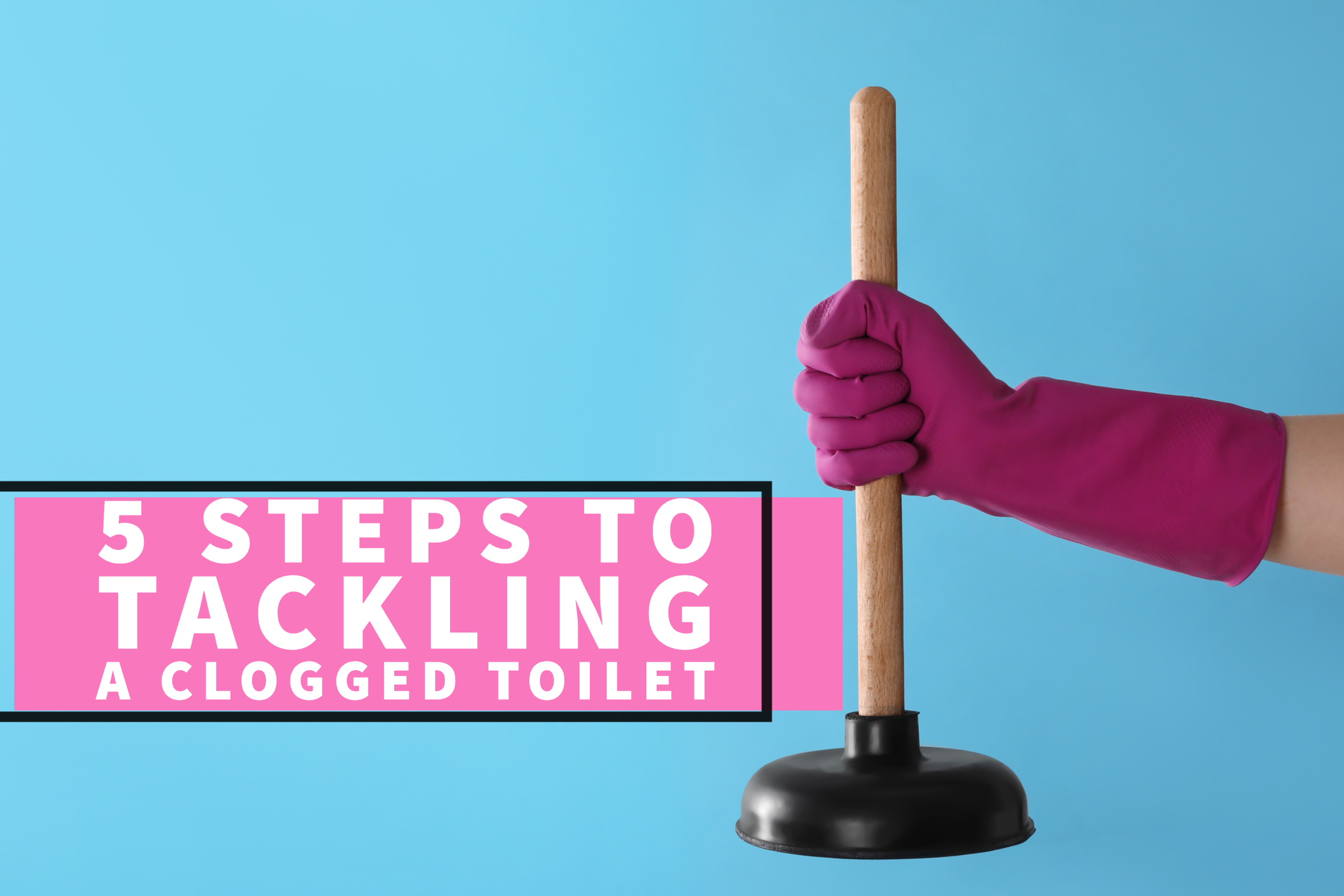Have you ever experienced a situation where the water level in your toilet bowl keeps rising after you flush, and it seems like it won’t stop? What steps do you take in such a situation? How should you react? These are valid questions but keep in mind – at this point, if toilet water is fated to be strewn across your bathroom floor, there’s not much you can do to prevent it from happening. So, first off, don’t panic. Next, breathe. Then, brace yourself; it will be okay! Lastly, follow these steps from your faithful Lebanon Plumbing & Drain professionals.
1. You Should Shut Off the Water Valve:
To prevent further chaos when dealing with a clogged toilet, try locating the shut-off valve behind the toilet. If you don’t know what it looks like, it is usually shaped like a football. You can turn this knob clockwise to shut off the toilet’s water supply. Just be sure not to flush the toilet again until everything is resolved in order to avoid making the mess worse.
2. You Should Seal the Flapper Closed:
After turning off the water supply, you can check inside the back tank of the toilet for a rubber circle. This rubber piece acts as a seal to prevent water from flowing into the toilet unless the flush lever is pulled. You should see the rubber seal attached to a metal lever or chain that connects to the flush handle. Go ahead and push down the rubber piece to make sure it is properly sealed.
3. You Should Tie Down the Float:
To regulate the water level in the toilet tank, search for the float cup or float ball inside the tank. You can provide a little extra assurance that the water is hindered from filling the tank by completely stopping the float from moving.
4. You Should Remove the Excess Water:
Congratulations on stopping the water flow! Unfortunately, your job isn’t done yet, though. It’s now time to clean up. Start by removing the excess water from the toilet bowl to prevent any potential overflow (once the toilet is working again). As the toilet is currently clogged, you may have to put in some effort to get it drained. If you come across waste or debris in the water, please be cautious when cleaning it up. It’s important to prioritize safety and hygiene at all times, so we definitely recommend using gloves if you have them. You can begin by picking up any solid materials or waste and placing them carefully in a trash bag. Just don’t forget to take out the trash bag when everything is all said and done. You may use a bucket or container of some sort to scoop the excess water out of the toilet bowl and carefully drain it into the bathtub or sink.
Another thing to consider is the potential damage that water can cause to your floors. So, it’s imperative to clean up your floors as soon as you can. If you have a wet vacuum, you can utilize it to clean up. Otherwise, for solid floors, you can use whatever materials you have on hand, such as rags or paper towels, to clean up the spill. However, if the spill has reached your carpeted area, it’s best to lay towels over the wet spot and place a heavy object on top of them to absorb the water. After disposing of any excess liquids and properly cleaning up, make sure to disinfect all the flooring and affected areas in the bathroom to avoid any potential health hazards.
5. You Should Take Care of the Blockage:
Now, let’s move on to addressing that clog! To clear a toilet blockage, you’ll need to use a plunger. Place the plunger over the drain in the bottom of the toilet bowl, making sure it is entirely covered in water. Then use the plunging motion to unclog the toilet. If the clog persists, there may be a larger issue at hand. This is a good sign that it’s best to call the professionals. Don’t hesitate to give us a call. We’re here to help you with all your plumbing needs!
If your toilet is actually working again, remember to put everything back into its original place and turn on the water valve once again! However, if you have tried unclogging the toilet several times to no avail, feel free to give us a call!
Are you in need of a local, trustworthy plumber? Call Lebanon Plumbing & Drain today at (513) 427- 2443, or schedule an appointment online now by clicking here!




